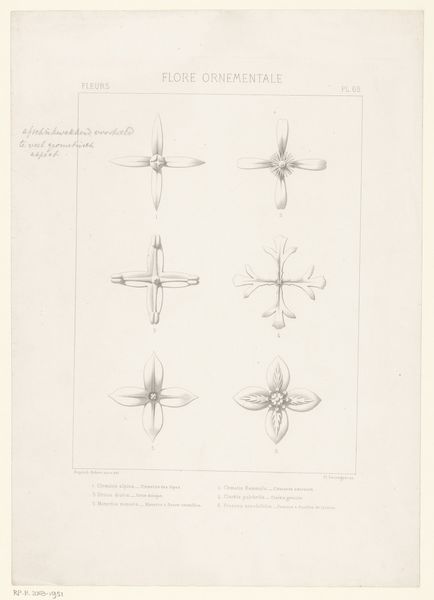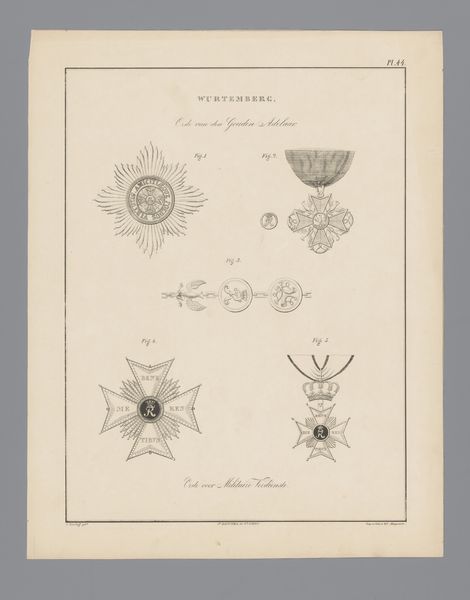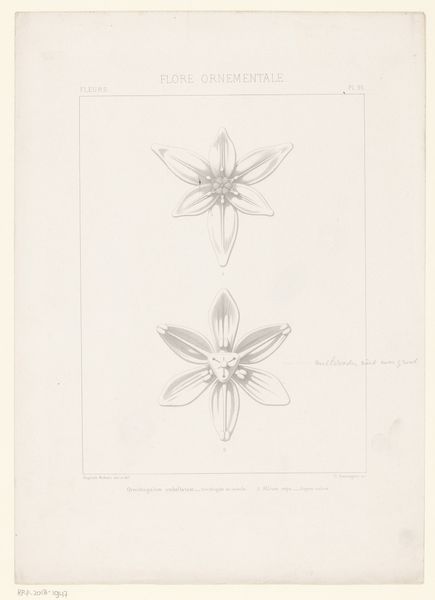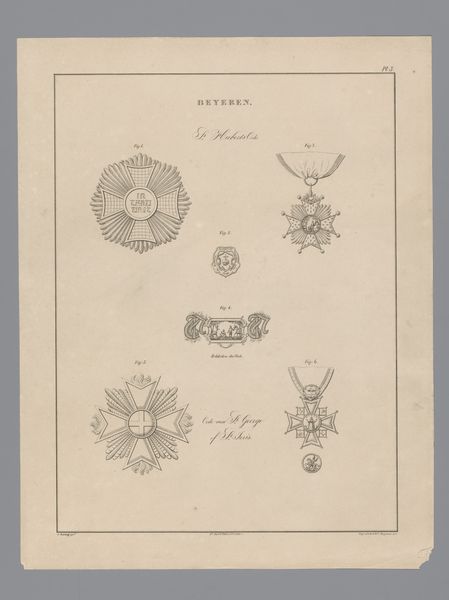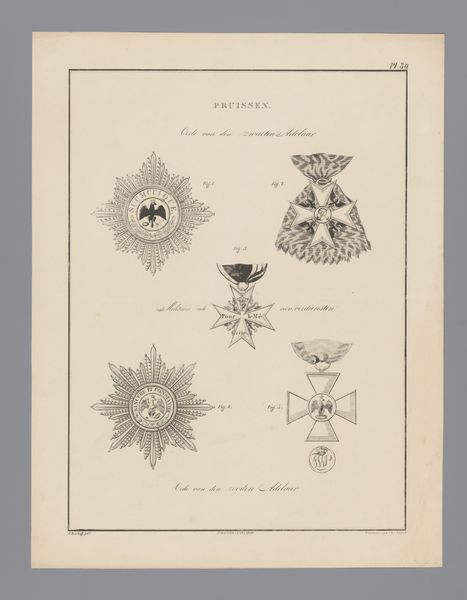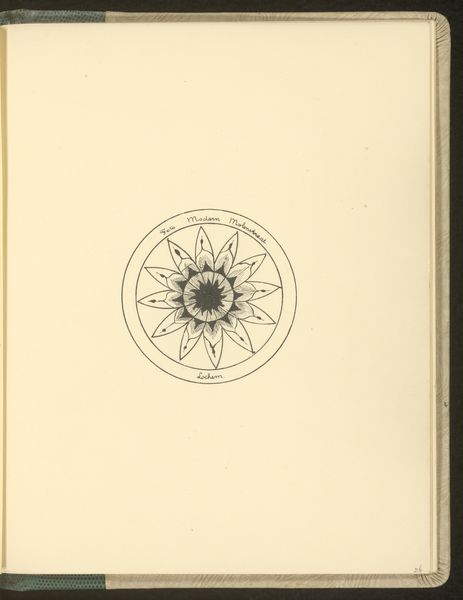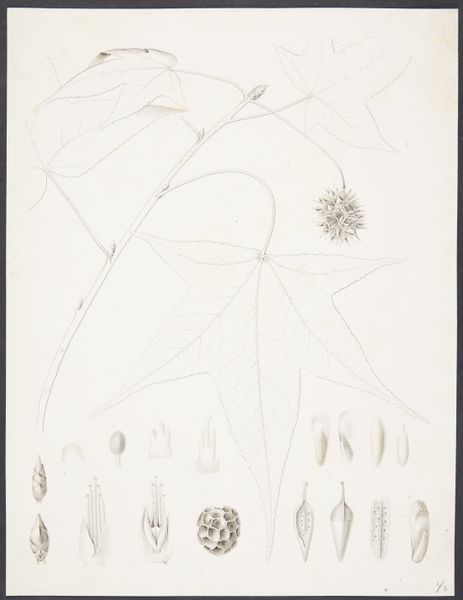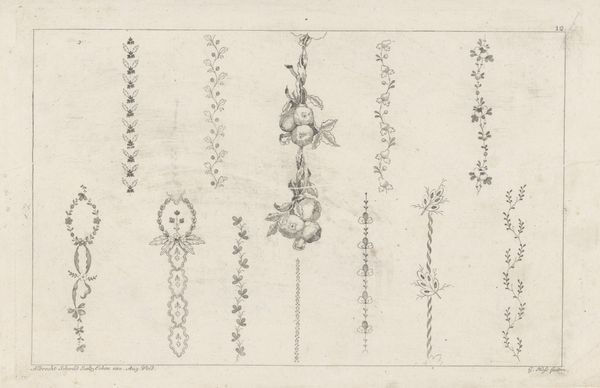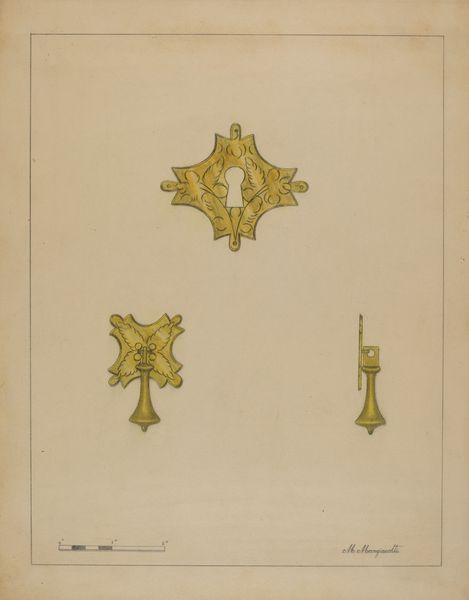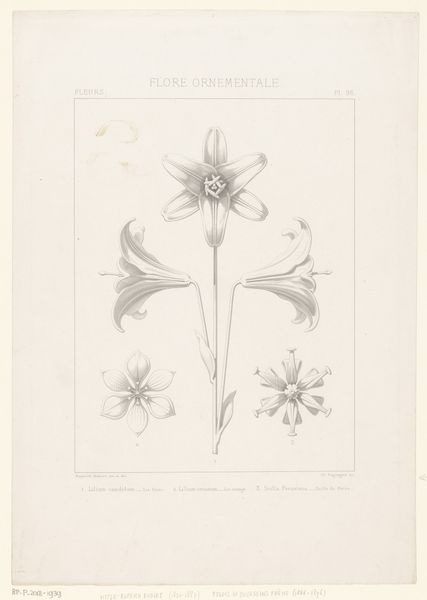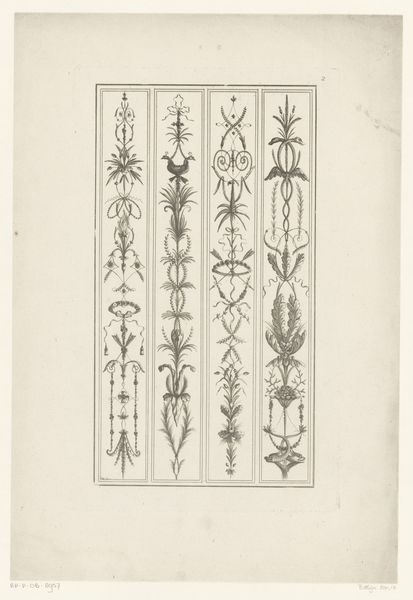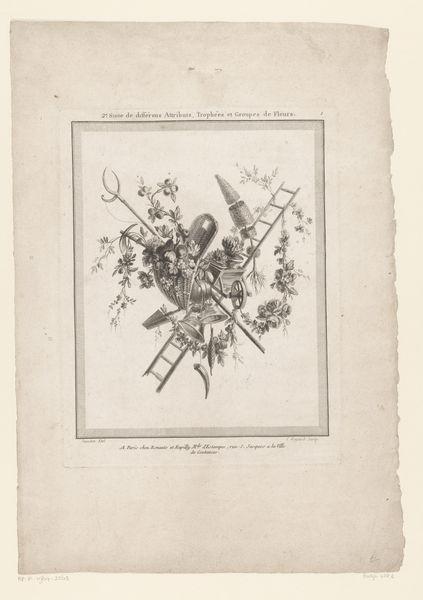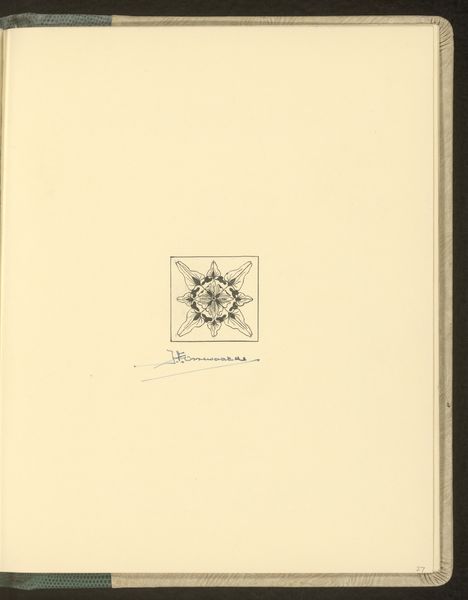
Studieblad met vooraanzichten van verschillende bloemen met vijf bladeren 1842 - 1885
0:00
0:00
drawing, print, graphite, engraving
#
drawing
#
aged paper
#
light pencil work
# print
#
light coloured
#
old engraving style
#
form
#
personal sketchbook
#
line
#
graphite
#
sketchbook drawing
#
academic-art
#
engraving
#
realism
Dimensions: height 327 mm, width 257 mm
Copyright: Rijks Museum: Open Domain
Curator: What we're looking at here is a print titled "Studieblad met vooraanzichten van verschillende bloemen met vijf bladeren," or "Study Sheet with Front Views of Various Five-Petaled Flowers." It's attributed to Claude Sauvageot and thought to have been created sometime between 1842 and 1885, employing techniques of drawing and engraving. Editor: Immediately, I notice the delicacy and the age. It feels very… fragile. Like holding a dried flower. The limited tonal range creates a certain quietude. Curator: Precisely. Sauvageot's choice of medium, likely graphite for the initial sketches and then engraving for reproduction, speaks to the academic art tradition, prioritizing line and form. The light-colored rendering feels very much like a study, perhaps preparatory work. This print operates within an intersectional frame when thinking about the period in question; plant studies such as this were a key means by which colonized geographies were understood, classified, and ultimately exploited, which connects the visual depiction to broader historical, social, and power structures. Editor: And yet, there's something archetypal about these flowers, specifically the star-like formations they present. Five-petaled flowers have appeared across countless cultures and time periods. Think of the potent symbolism attached to pentagrams and the associations with the number five, which relates to harmony and balance in Pythagorean thought. These simple forms have resonated within our collective cultural memory. Even in isolation, each blossom manages to stir complex emotional responses. Curator: Definitely, seeing them grouped as such encourages viewers to think about them both as specimens of an idea. It highlights botanical forms in contrast with each other. There is a tension between the objectification inherent in a scientific study and the symbolic power we readily project onto botanical life. The study highlights both the scientific rationalism of the age and our more subjective relationship with nature. Editor: So well put. It's a dance between observation and something innate that resonates within us, echoing shared experiences across millennia. The aged paper even acts as a kind of lens, making it less of an individual expression and something far larger and timeless. Curator: Exactly, seeing through this historical distance makes its message that much richer. Editor: I find the overall experience of seeing it, deeply poignant.
Comments
No comments
Be the first to comment and join the conversation on the ultimate creative platform.
